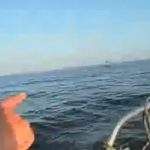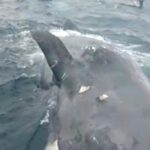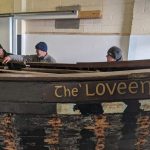Tag Archives: Atlantic Canada
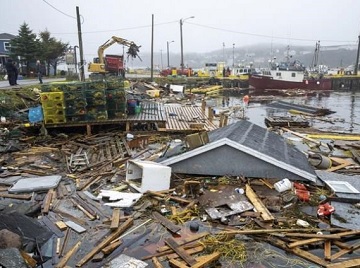
Newfoundland fishers face livelihood questions after Fiona storm damage
Colourful fishing stages bobbed in the water by Rose Blanche-Harbour Le Cou Tuesday as Cliff Bateman watched from his property. Days earlier, the picturesque buildings that are used to land and process fish were upright before post-tropical storm Fiona swept them into the ocean by the southwestern Newfoundland town. Bateman watched the storm toss them through the water. “It’s a big loss, I tell you that,” he said from inside his kitchen. The now-retired fisherman said he stored a priceless accumulation of gear and history inside the structures that were passed down through his family, some built over 100 years ago. >click to read< 10:08
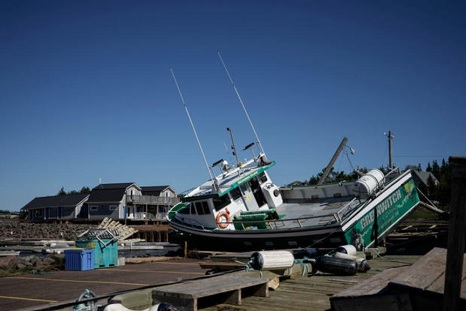
Body found as Canada struggles to restore power after storm – ‘Everything is unusable’
Hundreds of thousands of people in Atlantic Canada remained without power Sunday and officials said they found the body of a woman swept into the sea after former Hurricane Fiona washed away houses, stripped off roofs and blocked roads across the country’s Atlantic provinces. After surging north from the Caribbean, Fiona came ashore before dawn Saturday as a post-tropical cyclone, battering Nova Scotia, Prince Edward Island, Newfoundland and Quebec with hurricane-strength winds, rains and waves. >click to read<
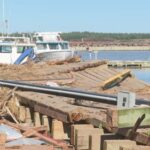 ‘Everything is unusable’: Fishers, farmers assess damage as Fiona wreaks havoc on industry – Officials have said areas exposed to storm surges have seen the most severe damage from the storm. In Morell, the Red Head Harbour wharf was almost completely totalled. Ken Drake was one of the fishers who spent Friday night there keeping an eye on their boats. He said all the boats have at least some damage. >click to read< 08:05
‘Everything is unusable’: Fishers, farmers assess damage as Fiona wreaks havoc on industry – Officials have said areas exposed to storm surges have seen the most severe damage from the storm. In Morell, the Red Head Harbour wharf was almost completely totalled. Ken Drake was one of the fishers who spent Friday night there keeping an eye on their boats. He said all the boats have at least some damage. >click to read< 08:05
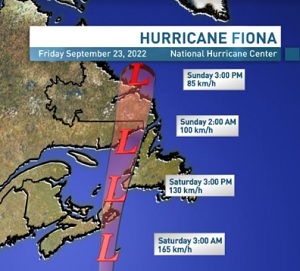
Hundreds of thousands without power in Atlantic Canada as Fiona makes landfall
Hundreds of thousands of customers in eastern Canada are without power as post-tropical storm Fiona brings intense, hurricane-strength winds and torrential rains to swaths of Nova Scotia, Prince Edward Island, New Brunswick and Quebec’s Magdalen Islands. Fiona made landfall in Nova Scotia shortly after 4 a.m. AT between Canso and Guysborough. >click to read< – New Brunswick – While the eye of the storm is well east of the province, post-tropical storm Fiona is causing widespread power outages through much of New Brunswick. >click to read< – Prince Edward Island – Tens of thousands of Maritime Electric customers are without power in P.E.I. as Fiona passes through the region, with wind gusts hitting 150 km/h and almost 100 mm of rain down. >click to read< – Nova Scotia – Hundreds of thousands of customers in Eastern Canada are without power as post-tropical storm Fiona brings intense, hurricane-strength winds and torrential rains to swaths of Nova Scotia, Prince Edward Island, New Brunswick and Quebec’s Magdalen Islands. >click to read< – Newfoundland – Homes lost, residents flee as Hurricane Fiona approaches Newfoundland. >click to read< 08:40
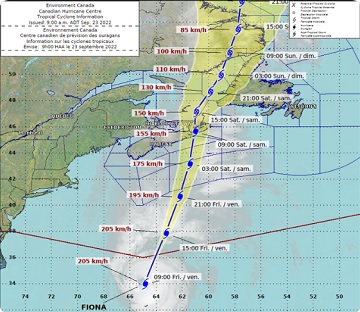
Canadian Hurricane Centre says Hurricane Fiona will be ‘historic, extreme event’
The Canadian Hurricane Centre says Hurricane Fiona will make landfall in eastern Nova Scotia as a powerful post-tropical storm early Saturday. In a Friday afternoon briefing, Bob Robichaud, a warning preparedness meteorologist with the centre, cautioned people not to focus on the hurricane’s track since its effects will be felt across a swath of eastern Canada. Environment Canada says this includes much of Nova Scotia, P.E.I., southeastern New Brunswick, western and southwestern Newfoundland, and some parts of Quebec bordering the Gulf of St. Lawrence. >click to read< – Current Hurricane Conditions – Environment Canada (weather.gc.ca) 13:54
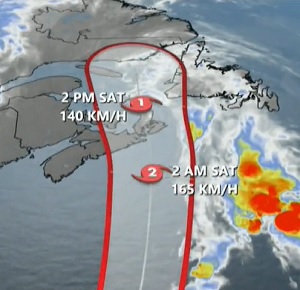
Hurricane Fiona threatens severe impacts across Atlantic Canada
Hurricane Fiona is roaring through the western Atlantic Ocean as a powerful Category 4 storm. The hurricane will brush Bermuda overnight Thursday before threatening major impacts across a large portion of Atlantic Canada. This is already a deadly hurricane. Five people died after Fiona produced devastating flooding across Puerto Rico as the storm traversed the Caribbean Island. Summer’s final sunset saw a powerhouse of a storm in Hurricane Fiona. The U.S. National Hurricane Center (NHC) found the storm had maximum sustained winds of 215 km/h on Wednesday evening. Some additional strengthening is forecast through Wednesday night, with some fluctuations in intensity possible on Thursday. Forecasters are keeping a close eye on potential impacts across Atlantic Canada for this weekend. Video, images, >click to read< 10:56

East Coast lobster harvest sustainable, according to non-profit’s criteria — but a Seafood Watch report advises consumers to avoid it
A recent report by a California-based seafood assessment group has the East Coast lobster industry seeing red. While Seafood Watch has put lobster on its “red list” and recommend consumers avoid it, lobster fisheries in most areas of Atlantic Canada have been certified sustainable by another group that has significant credentials in the business of seafood accreditation. In existence for about 25 years, the Marine Stewardship Council is a global non-profit organization that works to end overfishing around the world. Catherine Pigeon-Dubeau, fisheries and commercial manager for MSC in Eastern Canada, said the last review of the East Coast lobster fishery was in July of this year, and the Blue Label certification remains in place. >click to read< 14:10
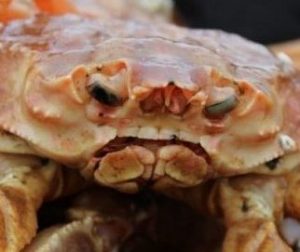
Atlantic Canada snow crab sales slowed to a crawl in 2022 according to latest export data
In 2021 crab fishing crews landed just over 39,000 metric tonnes. With an average price of $7.36 per pound the landed value that season was $623 million. There were expectations that N.L. harvesters might land a billion dollars’ worth of crab in 2022, thanks to record high prices of $7.60 at the start of the season, and DFO’s decision to increase the overall quota by 32 percent. However, global financial uncertainty precipitated by the Russian invasion of Ukraine, the end of virus economic stimulus packages in the United States and rising interest rates, lead to consumers scratching high priced seafood from their grocery lists. Just over a month into the season snow crab prices plummeted. >click to read< 12:37
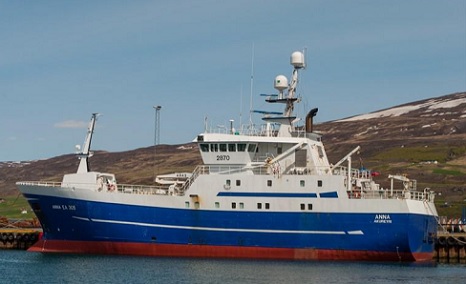
Atlantic fishing fleets ditch gill nets in favour of hook-and-line technology
The goal is higher-quality fish. That’s why one Canadian offshore fishing company is ditching gill nets in favour of hook-and-line fishing. The Arctic Fishery Alliance of Nunavut just bought a 52-metre longliner from Iceland to fish its quota of Greenland halibut (turbot) in the Davis Strait, near the Arctic Circle. In addition to adding modern processing equipment on board, the vessel will be fitted with a Mustad longline system, enabling the ship to deploy 40,000 fishing hooks daily. To fetch the best possible price in the market, a turbot fillet must be pure white. “And you don’t get that using gill nets,” said Earle. >click to read< 10:53
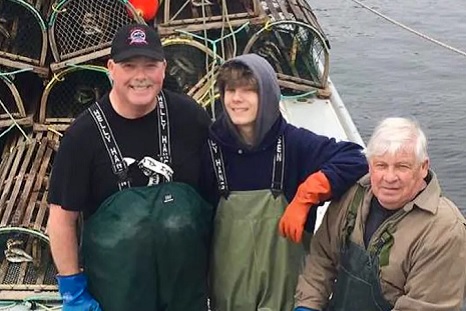
Regulations coming to Atlantic Canada could ensure safety of endangered right whales
Last month, Sierra Club Canada held a web discussion where it talked about the endangered North Atlantic right whale population in the Gulf of St. Lawrence and how new changes coming to the fishing industry could help protect them. DFO has been working to develop rope systems that are designed to release if too much force is applied suddenly. Currently, there are no regulations for fisherman to use low-bearing gear. Jenn Michael Lewis, who helps catch lobster in St. Peters Bay, said the response from fishermen in the community about the new rope regulations will likely be a negative one. “It has been a point of tension. There isn’t many right near St Peters Bay, many fishermen don’t see the point in switching,” Lewis said. >click to read< 08:10
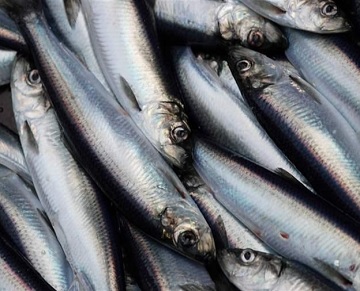
Management Plan Released for Atlantic Herring in Southwest Nova Scotia and the Bay of Fundy
Atlantic herring is a vital species in Atlantic Canada. As one of the largest commercial fisheries in Atlantic Canada, the Southwest Nova Scotia / Bay of Fundy herring stock directly or indirectly employs more than 1,000 people in rural Nova Scotia and New Brunswick and contributes over $140 million to the local economy. Atlantic herring is also an important source of bait for other commercial fisheries, such as lobster and snow crab. Despite a number of measures taken in recent years to encourage rebuilding, the Southwest Nova Scotia / Bay of Fundy Atlantic herring stock remains in the critical zone. Stronger sustainable management actions are needed to protect this important species and return it to abundance. >click to read< 13:29
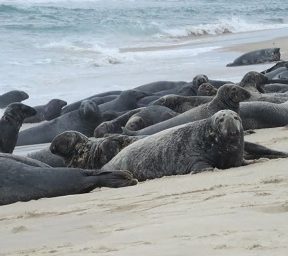
DFO: Atlantic Canada Grey Seal population is slowing
The grey seal population in Atlantic Canada continues to grow and is now estimated at 366,000, according to the 2021 stock assessment released Thursday by the Department of Fisheries and Oceans. But DFO says the population is growing at a much slower rate than in previous years and for the first time in 60 years it is believed pup production has decreased on Sable Island. Scientists used a new model to estimate the population in the latest report. It converted pup production numbers from aerial surveys to total population by combining reproductive and survival rates with the small number harvested by humans. Applying the new modelling to its 2016 estimate produced a sharply lower result. >click to read< 13:44
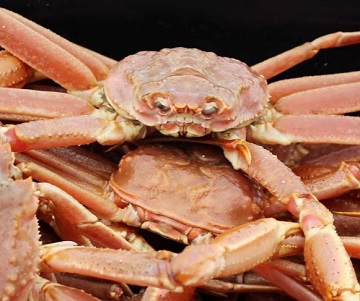
Snow crab prices plummet in Newfoundland
It wasn’t the news fish harvesters in Newfoundland and Labrador wanted to hear. They’ll get less for their snow crab after today, as the result of a decision by the province’s fish price setting panel. After reviewing a request from the Association of Seafood Producers and arguments by the Fish Food and Allied Workers, the panel went with the processors’ pitch of $6.15 per pound. That’s down nearly 20 per cent from the $7.60 per pound price that was set for the start of the season on April 1. In Nova Scotia, fish harvesters also saw a drop in snow crab prices a couple of weeks ago. They are now getting $8.25 a pound for snow crab, according to Gordon Beaton, local president with the Maritime Fishermen’s Union. >click to read< 11:06
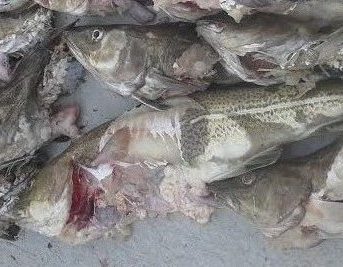
Woefully inadequate – DFO’s science on impact of seal population doesn’t go nearly far enough
Efforts by the Department of Fisheries and Oceans to measure the impact of the massive seal population in Atlantic Canada are “woefully inadequate,” according to a newly released task force report. The industry-led report, which was commissioned by DFO, disputes the department’s claims that, for the most part, seals are not harming fish populations. Industry has long argued that seals are having significant impacts on groundfish stocks, pelagic stocks, shellfish and salmon. >click to read< 09:13
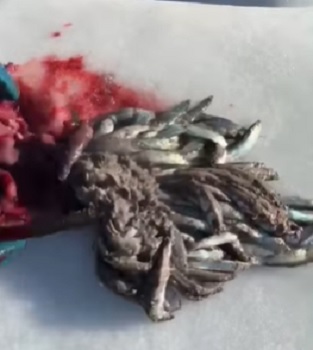
DFO says seals not having a significant impact on lobster bait stock
With mackerel and herring fisheries, key sources of bait for lobster fishermen, shut down this spring, some lobster fishermen are casting the blame on growing seal populations in the Gulf of St. Lawrence. P.E.I. lobster fisherman Charlie McGeoghegan suggested targeting the fishery is the wrong approach. “The seals have caused this problem and DFO has ignored it for over 25 years, because we’ve been telling them the whole time that their population is exploding and we know what they eat, based on science. They open them up and we know that they eat herring and mackerel and lots of it.” >click to read< 10:23

Will Atlantic Canada lobster season break another sales record? Or will inflation curb consumer appetite,,,
Roger Fowlow is paying a lot of attention to the long-range marine forecast these days. Lobster season opens soon and he’s hoping the unsettled spring weather will ease off, giving him light winds to set his lobster pots. He used to catch cod, but with quotas so low, cod prices stalled for years at less than a dollar a pound, and fuel prices soaring this year. He said it’s not worth bothering with. Lobster is the money maker, and the last few years have given him good catches and good prices. Fowlow is confident of good catches again this year. But on the question of the price he might get paid, he’s not so certain. For P.E.I. lobster fisher Bethany McCarthy, inflation is already driving up the cost of running her boat. In addition to higher prices for fuel, she’ll have to shell out more money for bait this year, thanks to DFO’s decision to kill the mackerel fishery. photos, video, >click to read< 12:15
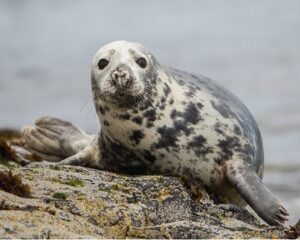
Why Canada shuttered some mackerel and spring herring fisheries in Québec and Atlantic Canada
The announcement by the Department of Fisheries and Oceans to suspend fishing for Atlantic mackerel and spring herring in the southern Gulf of St. Lawrence made waves as the fishing season opened. This decision will have repercussions on the fishing industry at several levels since these species are fished not only for commercial purposes, but are also used as bait in the lobster, snow crab and Atlantic halibut fisheries. The latest stock assessment of Atlantic mackerel and spring herring in the southern Gulf of St. Lawrence revealed high mortality rates among adult fish. In addition to high fishing pressure, the natural mortality of fish by predation also increased rapidly, The grey seal, now 16 times more abundant than in the 1960s, is the main predator of herring. >click to read< 18:38
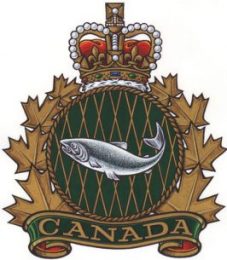
DFO enacts new regulations aimed at depleted fish stocks
The Department of Fisheries and Oceans has enacted new regulations that bind its minister to rebuilding Canada’s depleted fish stocks and ensuring healthy ones stay that way, a move that comes weeks after it closed down two East Coast fisheries in the name of sustainability. The regulations are the teeth behind amendments to the Fisheries Act passed in 2019 and have been closely watched by the commercial fishing industry and environmentalists. The changes were posted Wednesday in the Canada Gazette. It identified 30 major fish stocks that will require a rebuilding plan,,, The minister for the department will have up to three years to produce a rebuilding plan once the stock has hit the limit reference point. >click to read< 16:32
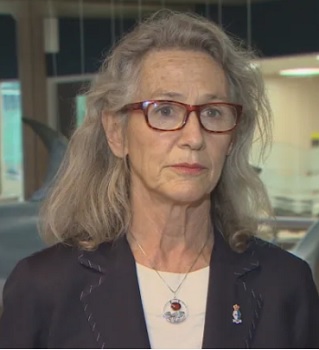
Minister Murray Shirks Responsibility in Setting Gulf Shrimp Quotas
A group representing Indigenous shrimp harvesters as well as shrimp harvesters in Newfoundland and Labrador, Quebec and New Brunswick are calling on the Minister of Fisheries and Oceans to set a total allowable catch (TAC) for the 2022 gulf shrimp fishery. This coalition, which represents approximately 100 shrimp enterprises employing over 500 harvesters and thousands of plant workers in Atlantic Canada, says there is no excuse for interim quotas set by Minister Joyce Murray and the delayed decision is a financial threat to their sustainability, and in many cases, their business’s survival. >click to read< 15:25
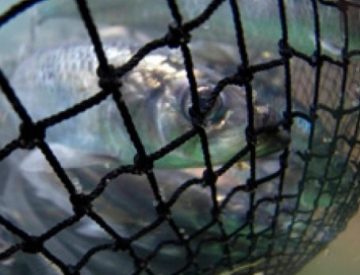
Ottawa announces closure of Atlantic mackerel, bait fisheries to restore stocks
Fishers on the East Coast are expressing their disappointment with Ottawa after DFO closed the Atlantic mackerel and commercial bait fisheries, citing concerns that dwindling stocks have entered a “critical zone.” The department said in a release Wednesday it was taking “urgent action” to help preserve the stock of southern Gulf spring herring and Atlantic mackerel with the closures in Atlantic Canada and Quebec. Fisheries Minister Joyce  Murray said she recognizes many harvesters depend on the fisheries, and she promised to work with them and others in the industry to preserve the stocks. Fishers in the sector, however, want the decision reversed. Martin Mallet, “It’s going to have a major impact — an atomic bomb impact — on our whole East Coast fishery, from Newfoundland to Quebec to southwest Nova Scotia,” >click to read< 18:52
Murray said she recognizes many harvesters depend on the fisheries, and she promised to work with them and others in the industry to preserve the stocks. Fishers in the sector, however, want the decision reversed. Martin Mallet, “It’s going to have a major impact — an atomic bomb impact — on our whole East Coast fishery, from Newfoundland to Quebec to southwest Nova Scotia,” >click to read< 18:52

Atlantic Canada snow crab fishery hopes for another banner year
But concern over high fuel prices, fear of U.S. recession dampens hopes for one Nova Scotia processor. The snow crab fishery in Atlantic Canada is gearing up in hopes of another banner season in 2022, buoyed by expectations of more quota, high prices and less competition from rival nations. But will rising inflation, especially in the United States, and uncertainty over the war in Ukraine dampen the spectacular returns in 2021 when the fishery was valued at nearly a billion dollars? >click to read< 10:04

Atlantic Canada seafood sectors surged in 2021
In Riverport on Nova Scotia’s south shore, lobster fisherman Jason Conrad remembers when the pandemic hit in the spring of 2020 and the price of lobster plummeted to $4 a pound — below what it cost him to catch a lobster. Last month, Conrad was getting over $14 a pound — a sign of industry recovery that began at the end of 2020. “It rebounded way faster than I thought it would,” he said. Snow crab increases huge, A Banner year for lobster, More money for repairs, new boats >click to read< 10:25

Where Did All the Mackerel Go?
Summer in Atlantic Canada can be unreliable, emerging reluctantly from the damp cold of spring. But a sure sign of its arrival is the sudden presence of Atlantic Mackerel, Slipping away is already something of a mackerel specialty as they dart from their winter habitat, in the deep water along the continental shelf stretching from Nova Scotia to North Carolina, to their inshore summer spawning grounds. For the so-called northern contingent, from which the Canadian catch is derived, these spawning grounds are in the Gulf of Saint Lawrence; for their southern counterparts, summer is spent on the mid-Atlantic coast up to the Gulf of Maine. >click to read< 09:55
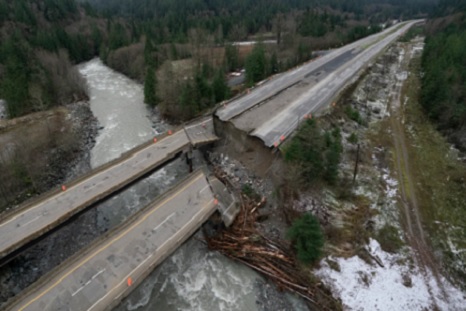
Devastating Damage from B.C., Atlantic storms no easy fix
The rainstorms in British Columbia and Atlantic Canada have impacted livelihoods, with damaged highways and rail lines cutting off communities and hampering key supply chain routes. Unprecedented rainfall from atmospheric rivers in B.C. and the Maritimes has dropped hundreds of millimetres worth of rain — surpassing in days the totals some regions see in a whole month. Video, photos, >click to read< For a page of some amazing stories from both coasts, with more being added as we find them. >click to read< 14:16
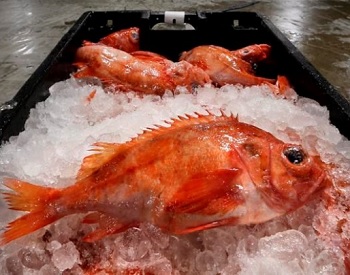
Redfish return sparks Atlantic race to cash in on reopening of commercial fishery
The centre of attention is a large section of the gulf known as Unit 1, stretching from the western coast of Newfoundland across to Quebec’s Gaspé Peninsula and down toward the northern tip of Cape Breton. A federal Fisheries Department moratorium on commercial fishing of redfish was imposed in the area in 1995 and has remained in place ever since. But from 2011 to 2013, research showed that three robust redfish cohorts had propelled growth in the overall stock. “There’s probably more redfish in the Gulf of St. Lawrence now than we’ve ever seen in our recorded history,” >click to read< 07:19

Access: Fight over emerging redfish fishery amps up as offshore sector bites back
In a highly managed media event staged at Memorial University’s Signal Hill campus, officials from the Atlantic Groundfish Council, which represents more than 100 offshore groundfish licence holders in Atlantic Canada, and Ocean Choice International, fought back against what they say is an attack that threatens the livelihood of people linked to the offshore sector. “It’s time this attack stops. It’s negative. It’s divisive and it’s not good for the province,” said Martin Sullivan, CEO and co-owner of Ocean Choice International,,, >click to read< 07:51
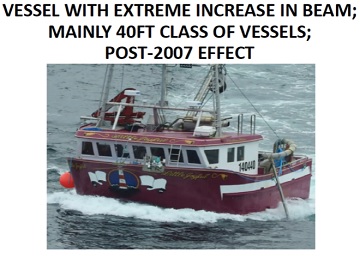
DFO rules forcing fishing industry into unstable boats
The ability to safely navigate in rough seas is not only dependent on experience. Boat design and stability are also crucial factors. And vessel stability expert Dag Friis says the current trend in Atlantic Canada to build wider fishing boats, to create more deck space and to comply with the maximum vessel length criteria set by the Department of Fisheries and Oceans (DFO), is putting those boats, and their crews, at risk. photos, >click to read< 15:02
Tropical depression making its way toward Nova Scotia
Claudette, a tropical depression, may affect Atlantic Canada on Tuesday. The depression claimed 12 lives Saturday at it passed through Alabama and brought flooding to a number of southern U.S. states. According to the Canadian Hurricane Centre, the depression is moving over the southeastern U.S. today and tonight and is expected to move back over the ocean overnight and regain tropical storm strength off the Carolinas. >click to read< 16:26
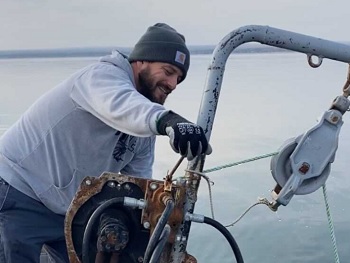
A group of Indigenous Fishermen want to take the Government of Canada to court with a class action lawsuit
Cody Caplin is frustrated. “They just keep taking away from me and my family,” he says. “The “they” he’s referring to are officers from the federal Department of Fisheries and Oceans, who Caplin alleges keep him under surveillance. He says these officials are often around when he comes back to the wharf from fishing. “If we go drop traps, they’ll park their vehicle, walk on down to our boat, and say ‘you guys can’t put those traps in the water without tags.’ [And I’ll say] ‘well, actually, we can,’” he says. That’s why Caplin is part of a group of Mi’kmaq fishermen from across Atlantic Canada looking to launch a class action lawsuit against the Canadian government, claiming that their rights are not being respected. >click to read< 20:33
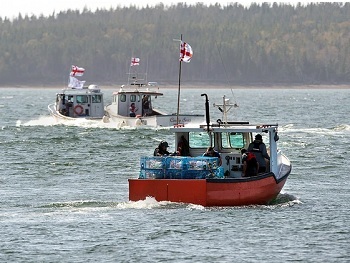
Minister Jordan issues statement on cooperative path forward with Potlotek First Nation moderate livelihood fishery
“I am pleased to announce today that we have reached an understanding that will see Potlotek First Nation fishing for a moderate livelihood and selling their catch starting Saturday, June 5, 2021.” As an interim measure, we will be recognizing those harvesters designated under Potlotek’s plan to be authorized to fish 700 jakej (lobster) traps without adding additional access and during the established season underway in Lobster Fishing Areas 27, 28, 29, 30 and 31a – which is within the Unama’ki region and aligns with Potlotek’s identified traditional district. The Unama’ki region is one of the seven Mi’kmaq districts in Atlantic Canada and Quebec, and spans Cape Breton Island. >click to read< 14:19





































